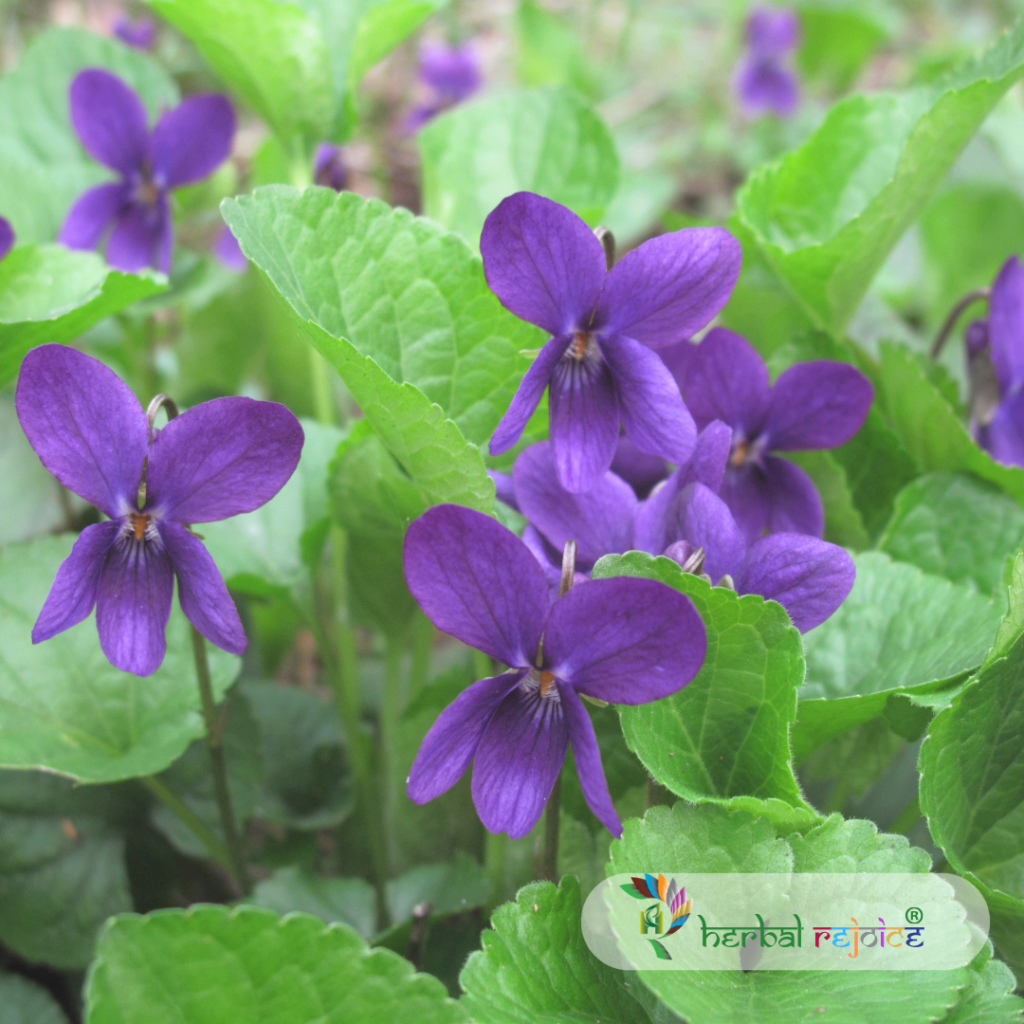Introduction
Viola odorata Linn., commonly known as Sweet Violet,
is a flowering plant that belongs to the Violaceae family. It is native to Europe but is also cultivated in Kashmir. In the Unani system of medicine, it is known by various names such as Banafshaa, Banafsaj, Kakosh, and Fareer.
Medicinal Properties
Sweet Violet has several medicinal properties, including expectorant, anti-inflammatory, diaphoretic, antipyretic, and diuretic actions. It is commonly used to treat catarrhal and pulmonary affections, as well as diseases of the liver and intestines. Although the German Commission E has not approved it as a medicinal herb, there is substantial traditional evidence supporting the use of Sweet Violet root as an expectorant for respiratory tract issues. The British Herbal Pharmacopoeia recognizes the expectorant activity of the leaf.
Chemical Constituents
The flowers of Sweet Violet (var. maxima) are a rich source of rutoside. They also contain anthocyanin and violanin chloride, which, upon hydrolysis, yield glucose, delphinidin, rhamnose, and p-coumaric acid. The flowers have a high content of tocopherol. Dried flowers of Sweet Violet contain approximately 4.0% anthocyanin, 1.1% total flavonoids, 0.4% rutoside, 18% mucilage, and 8.5% ash. The leaves of this plant contain friedelin and beta-sitosterol. The essential oil derived from the entire plant is comprised of methyl salicylate. Additionally, an adiC-glycoside called violanthin has been reported from this plant.

Conclusion
In conclusion, Sweet Violet (Viola odorata Linn.) is a medicinal plant with various valuable properties. Although it is not officially recognized by the German Commission E, the traditional use of Sweet Violet root as an expectorant is supported by substantial evidence. The flowers of this plant are a rich source of rutoside and other compounds, while the leaves contain friedelin and beta-sitosterol. The essential oil from the entire plant contains methyl salicylate. Overall, Sweet Violet is a valuable herb that can be used for various ailments.
Frequently Asked Questions
What is Viola odorata Linn.?
Viola odorata Linn., commonly known as Sweet Violet, is a flowering plant belonging to the Violaceae family.
Where is Sweet Violet native to?
Sweet Violet is native to Europe.
Is Sweet Violet cultivated in Kashmir?
Yes, Sweet Violet is also cultivated in Kashmir.
What are the medicinal properties of Sweet Violet?
Sweet Violet has expectorant, anti-inflammatory, diaphoretic, antipyretic, and diuretic actions.
What are the common uses of Sweet Violet in medicine?
Sweet Violet is commonly used to treat catarrhal and pulmonary affections, diseases of the liver and intestines, and respiratory tract issues.
Is Sweet Violet approved as a medicinal herb by the German Commission E?
No, Sweet Violet is not approved as a medicinal herb by the German Commission E.
What evidence supports the use of Sweet Violet root as an expectorant?
There is substantial traditional evidence supporting the use of Sweet Violet root as an expectorant for respiratory tract issues.
Does the British Herbal Pharmacopoeia recognize the expectorant activity of Sweet Violet?
Yes, the British Herbal Pharmacopoeia recognizes the expectorant activity of Sweet Violet leaf.
What compounds are found in the flowers of Sweet Violet?
The flowers of Sweet Violet are a rich source of rutoside, anthocyanin, and violanin chloride.
What are the components of the flowers of Sweet Violet upon hydrolysis?
Upon hydrolysis, the flowers of Sweet Violet yield glucose, delphinidin, rhamnose, and p-coumaric acid.
What is the tocopherol content in the flowers of Sweet Violet?
The flowers of Sweet Violet have a high content of tocopherol.
What are the key contents of dried Sweet Violet flowers?
The dried flowers of Sweet Violet contain approximately 4.0% anthocyanin, 1.1% total flavonoids, 0.4% rutoside, 18% mucilage, and 8.5% ash.
What compounds are found in the leaves of Sweet Violet?
The leaves of Sweet Violet contain friedelin and beta-sitosterol.
What is the main component of the essential oil derived from Sweet Violet?
The essential oil derived from Sweet Violet contains methyl salicylate.
Is there any other compound reported from Sweet Violet?
Yes, an adiC-glycoside called violanthin has been reported from Sweet Violet.
What is the traditional use of Sweet Violet root as?
The traditional use of Sweet Violet root is as an expectorant.
Can Sweet Violet be used for diseases of the liver and intestines?
Yes, Sweet Violet can be used for diseases of the liver and intestines.
What are the uses of Sweet Violet in the Unani system of medicine?
In the Unani system of medicine, Sweet Violet is known for its use in treating diseases of the liver and intestines, as well as catarrhal and pulmonary affections.
What is the rutoside content in Sweet Violet?
Sweet Violet has a rutoside content of approximately 0.4%.
Are there any other properties or uses of Sweet Violet?
Aside from its medicinal properties, Sweet Violet is also cultivated for its flowers.


